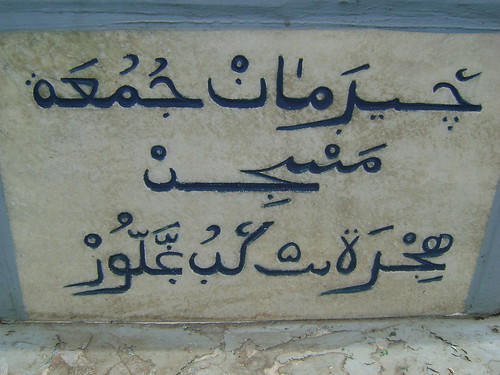By Kashif-ul-Huda, TwoCircles.net
TCN Malabar series: Part 7
When Vasco de Gama landed near Calicut in 1498, he brought with him a letter in Arabic for Zamorin, the local Hindu ruler. This shows not only the presence but also the influence of the Muslims in Malabar. Zamorins and the Mappilas had great relations over the centuries. Muslims managed Zamorin’s navy, international trade, and diplomacy. Zamorins, who ruled Calicut for almost 700 years had once decreed that all those residing in coastal areas and born on a Friday, should be brought up as Muslims. The Mappila culture is a beautiful amalgam of Arabic and Malayalam culture. Over the years it developed its own unique style in food, clothing, language, songs, and even dance.
As we saw earlier, mosques took heavy inspiration from Hindu temple art. This is due to the fact that the artistans who made temples also built mosques. However, new innovations, keeping in mind Islamic principles and Muslim needs, gave shape to something that was local as well as novel.
Arabi-Malayalam is a good example of the ingenuity of the Mappilas. Learning Arabic was a religious necessity for Malabar Muslims as the Holy Quran is written in Arabic. To give voice to their creativity however, they had to use Malayalam. There are 28 letters in Arabic alphabets but 13 of these do not have phonetic equivalents in Malayalam. Even words like “Allah” and “Muhammad” cannot be phonetically written in Malayalam. Similarly, Arabic’s 28 letters were not enough to represent all 53 letters of the Malayalam language.

An inscription in Arabi-Malayalam outside Cheraman Juma Masjid
The solution that Muslims came up with was a language called Arabi-Malayalam. It is Malayalam written in a modified Arabic script that can account for all Malayalam sounds and still represents Arabic words in the original script in order to preserve correct pronunciation. Different scholars have dated the origin of the script differently; estimates vary from 1500 years ago to 1000 years to about 500 years ago.
Arabi-Malayalam became the language of choice for Mappilas. It wasn’t until recently that they began to learn Malayalam in its original script. Mappila literature was written in this new language, and was taken to new heights in both poetry and prose. Mappila Pattu are the folklore songs in Arabi -Malayalam language and are generally devotional in nature. This continues to be a popular art from in Malabar. The oldest poetry in Arabi-Malayalam is probably Muhiyuddin Mala that tells the miraculous tales of Muhiyuddin Shaikh of Jilan. The long struggle that Mappilas led against the invading Portuguese explains why a number of their poetry is actually martial songs. In style, Mappila songs start with a slow beat then picks up pace gradually and ends in a climax.
In prose, Arabic Malayalam is mostly translation of the original books. Even though Mappilas have now started learning the language in Malayalam script, Arabi-Malayalam survives.
Mappilas dances are group dances that involve complex movements and coordination. Kokkkali is performed by men with sticks. Aravanamuttu involves a duff like instrument which is performed by a group of men. It is as much a feast for the eyes as for the ears.
Oppana is a wedding dance performed by group of females. In this dance, performed a day before her wedding, the bride sits in the middle while dancers perform by clapping and moving around her in patterns.
Mappila cuisine, just like other parts of the culture, is a harmonious mix of Arab and Kerala food habits. Kerala being a land of coconut, the seed is used in almost all dishes of the Mappila cuisine. Rice is a staple food of Kerala while Arabs preferred bread, so in Mappila cuisine we have examples of bread (pathiri) that are made of rice. Like other Muslims of India, Mappilas also have their own version of biryani. Meat and rice is cooked separately for Malabar Biriyani and then layers of meat is added within layers of rice and steamed. Arab influence is still visible and the latest craze here is “Sharjah Shake,” a nod to the continuing connection with Arab countries.

